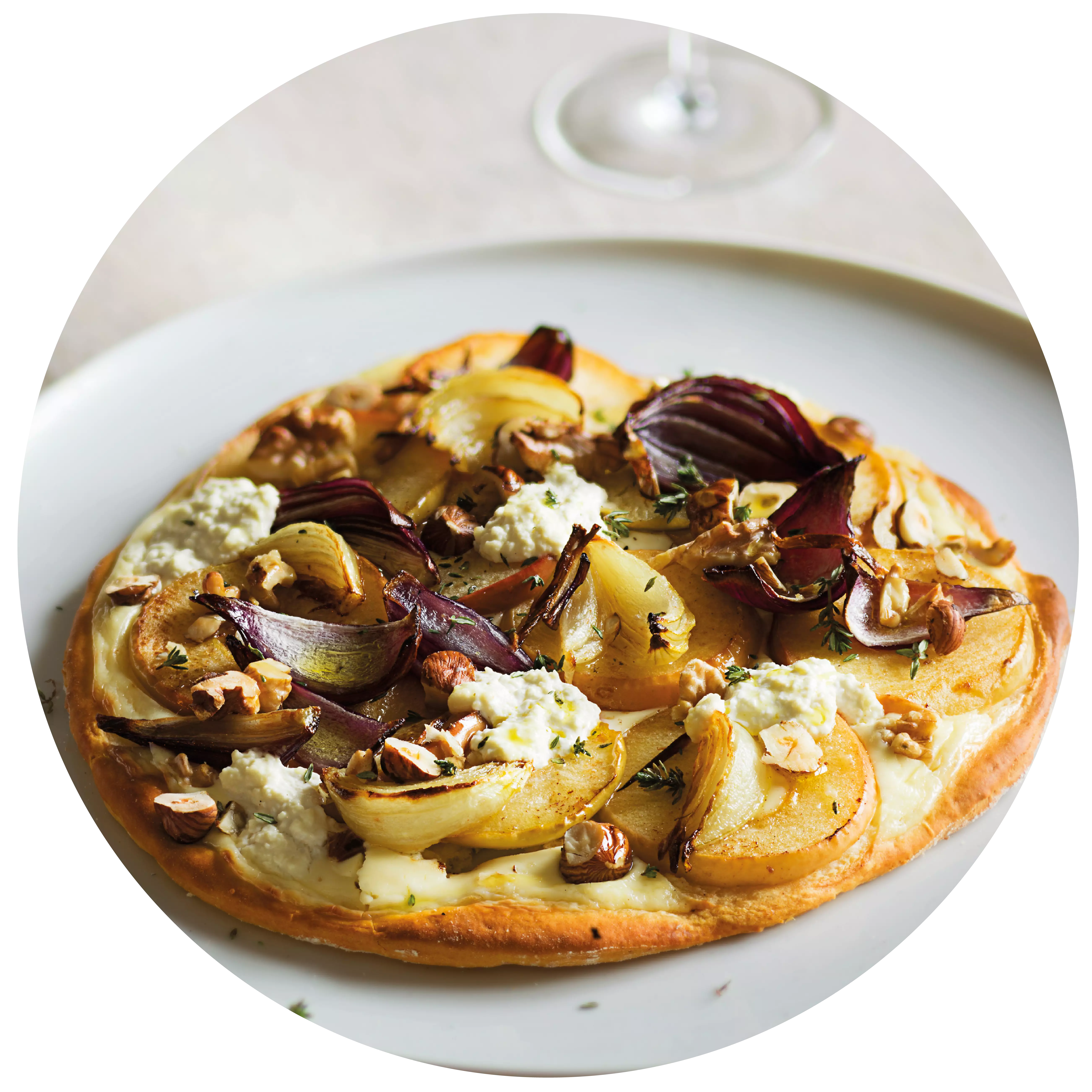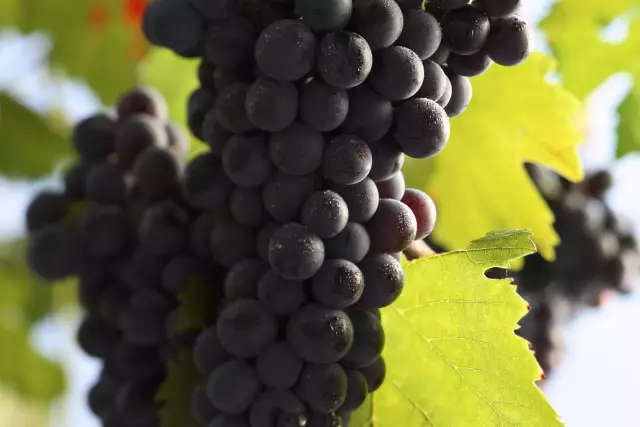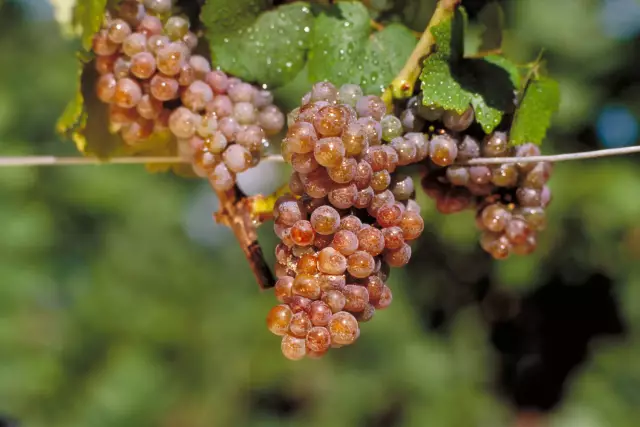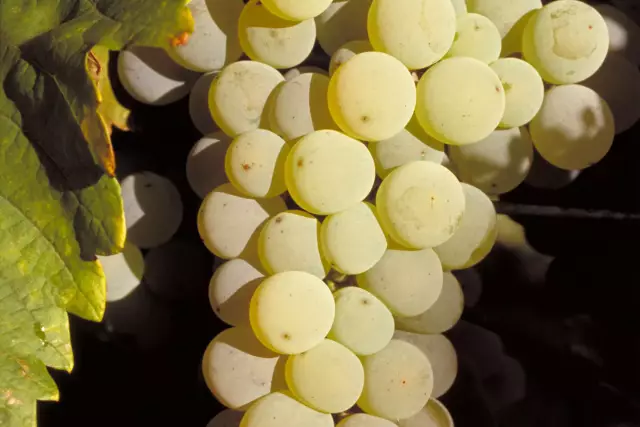Riesling
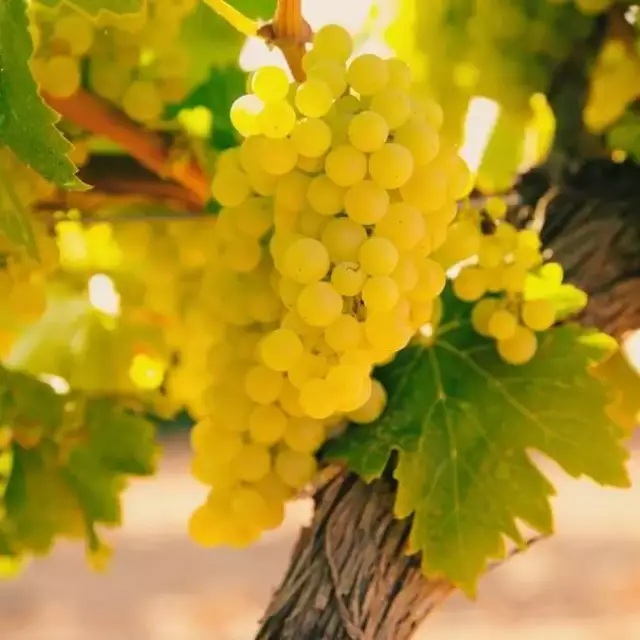
Riesling is one of the highest quality grape varieties, owing its worldwide reputation to its lively acidity and diverse aromas shaped by the terroir.
Facts
-
40 percent
of global production in Germany
-
24.233 ha
Vineyard area 2024
-
13 March
Riesling-Birthday
Cultivation
The Riesling is a slowly ripening grape variety whose defining element is its fruity acidity. It is therefore predestined for the northern growing regions, where it completes its ripening in the late autumn sun. It makes the highest demands on the location (energy), but low demands on the soil. Depending on the location (soil type and microclimate), it produces very differently nuanced wines. Optimal conditions are offered by the heat-retaining stony steep slopes along the river valleys.
Significance
It is considered the flagship of German viticulture. Like no other grape variety, Riesling determines the worldwide image of the 13 German wine-growing regions. Germany is considered the home of Riesling - after all, with 24,233 hectares (2024), about 40% of all Rieslings in the world are grown in German vineyards.
In the Rheingau, Riesling accounts for around 2.412 ha (2024), almost 78% of the available vineyard area there. The largest German Riesling growing region is the Pfalz (approx. 5.926 ha), followed by Rheinhessen (approx. 5,438 ha) and the Mosel (approx. 5,266 ha). Larger Riesling growing areas can also be found in Württemberg, on the Nahe and in Baden.
Development and taste
Riesling wines are available in all quality levels and flavours. Some are matured in traditional wooden barrels. In addition to uncomplicated everyday wines, there is a rich selection of Prädikat wines. In the higher quality levels, residually sweet or noble sweet wines are more common, but many quality or Kabinett wines (especially in the northern growing regions) are also balanced with a subtle sweetness to compensate for the high acidity.
The "typical" Riesling is pale yellow in colour, tending towards greenish-yellow, with a predominantly peach or apple aroma and a racy acidity in the mouth. Rieslings from slate soils are said to have a mineral note, some wines smell of flint, age-ripened growths often have an interesting petrol tone.
The natural acidity offers good potential for sparkling. Thus, we find vintner's sparkling wines from Riesling in many wineries. Edelsüße Beerenauslesen or Eisweine are among the most highly traded German wines, also internationally. Rieslings should be drunk at the earliest one year after the harvest; many only reach their optimal drinking maturity after a few years. The shelf life of top wines is almost unlimited.
History
The early spread of Riesling, with first evidence dating back to the 15th century, the growth, the size of the grape berries, the long ripening period and frost resistance show its relationship to wild vines. The longest Riesling tradition is probably with the winegrowers in the Rheingau and on the Moselle; there are historical documents from there that can be dated to 1435 and 1465 respectively. On 13 March 1435, the word Riesling was mentioned in a document for the very first time. Evidence of its distribution in what is now Rheinhessen and the Palatinate dates from the end of the 15th century and the first half of the 16th century.
Riesling was one of the grape varieties recommended by the state not only today, but also in the 17th and 18th centuries. There is still some debate about the derivation of the name: is the word Riesling associated with trickling, with brisk acidity, with "noble rice" or with Rusling (dark wood)? Internationally it is known as "Rheinriesling", for Baden Riesling wines the synonym "Klingelberger" may be used. Our "Weißer Riesling" has nothing in common with Welschriesling, which is cultivated in Austria, Italy and Slovenia, among other countries.
The name researcher Prof. Dr. Jürgen Udolph has published a scientific article on the origin of the name "Riesling" under the title "Woher hat der Riesling seinen Namen".
Are Welschriesling and Schwarzriesling related to the classic Riesling?
Welschriesling is a white grape variety whose roots are still unclear today. In France, the red grape variety Schwarzriesling is part of the Champagne cuvée.
with apples and nuts Tarte flambée
with apples and nuts
- 250 Gramm Weizen- oder Dinkelmehl
- 150 Gramm Crème fraîche
- 150 Gramm körniger Frischkäse
- 2 säuerliche Äpfel
- 1 - 2 Zwiebeln
- 30 Gramm Walnüsse oder Haselnüsse
- 15 Gramm Hefe
- 1 EL Zucker
- 2 EL Olivenöl
- 2 Zweige frischer Thymian
- Nach Bedarf Salz & Pfeffer
- 200 ml warmes Wasser
For the yeast dough, sieve the flour into a bowl and make a well in it. Dissolve the yeast in a little warm water and pour into the well. Cover the bowl with a cloth and leave to rise for 10 minutes. Then knead the pre-dough with the dough hook of a hand mixer and gradually work in the warm water, the oil and a teaspoon of salt. Leave the kneaded dough to rise until it has doubled in volume (approx. half an hour, in a warm place).
Cut the onions into wedges. Roughly chop the nuts. Core the apples, cut into slices (the thicker the apple slices, the juicier the tarte flambée) and sprinkle with the sugar.
<p
<p>After resting, divide the dough and roll out each half on a baking tray lined with baking paper. Preheat the oven to 220 °C (top and bottom heat)
Spread the crème fraîche evenly over the tarte flambée and top with the apple slices and onion wedges. Spread the fresh cheese on top and sprinkle with the walnuts. Sprinkle with a little salt and pepper.
Bake on the lowest shelf for 12-15 minutes and sprinkle with the fresh thyme before serving.
- Riesling (halbtrocken & feinherb)
- Riesling (lieblich)
